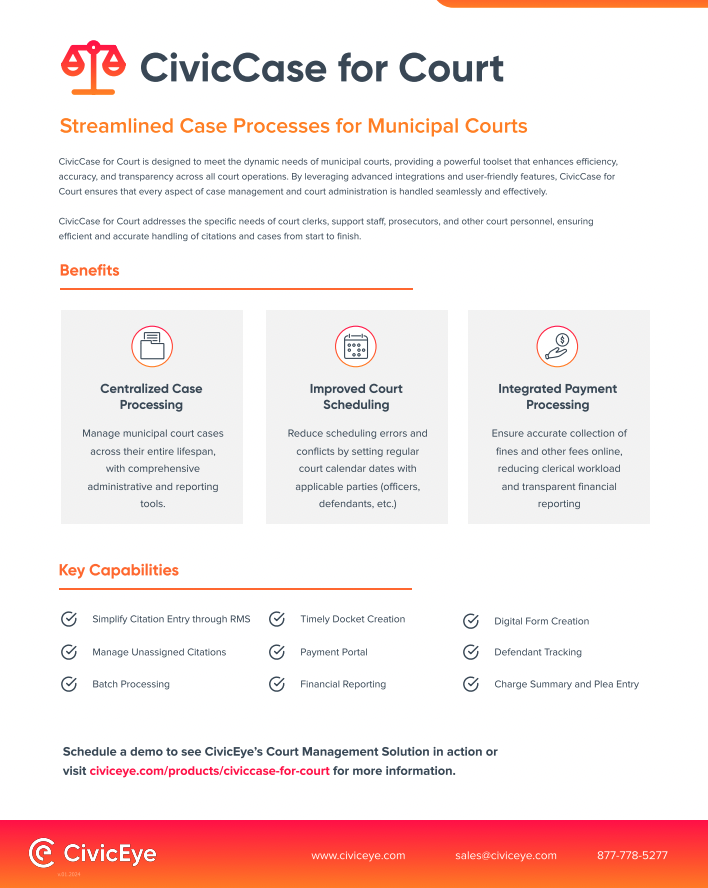-
Products
-
Products
-
CivicRMS
Cloud-based law enforcement records management system (RMS) with tools for data-driven insights.
-
CivicDocs
Digital evidence management system (DEMS) that enables users to securely access digital evidence.
-
CivicCase for Prosecutors
Prosecution case management system (CMS) that expedites every step of the prosecution process.
-
CivicCase for Court
Efficient court case management software for streamlined docket and scheduling management.
-
CivicRMS
-
-
Who We Serve
-
Who We Serve
-
Law Enforcement
Strong digital infrastructure to help agencies manage operations and keep communities safe.
-
Prosecutors
Tools to support prosecutors and district attorneys in collaborating and closing cases.
-
Explore Our Locations
Discover where CivicEye operates and offers our innovative software solutions.
-
Law Enforcement
-
-
Company
-
Resources
- Support


